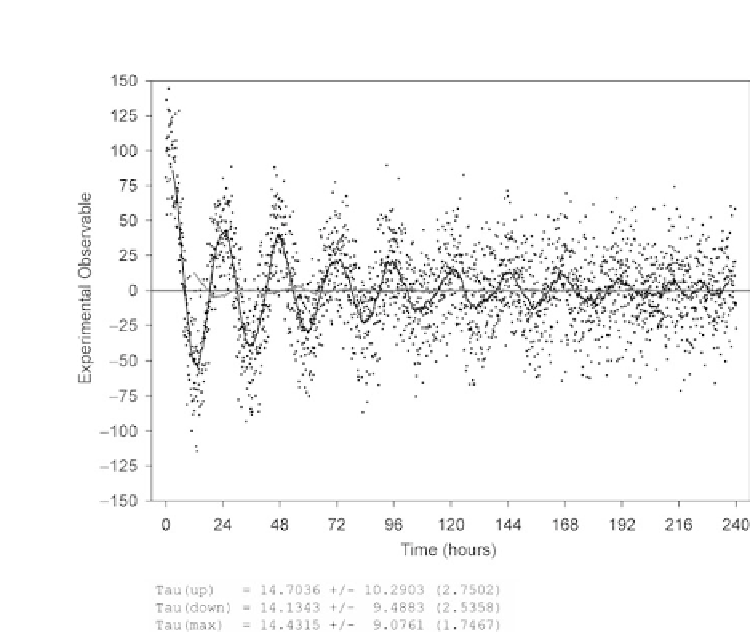Biology Reference
In-Depth Information
FIGURE 11-33.
PHASEREF analysis of the noisy nonstationary data series originally presented in Figure 11-15, in
which detrending by DTRNDANL was performed before rhythms analysis.
period is the most robust. Similar considerations lead to identifying
the primary period for the tau
ss
hamster to be 20 hours (with a
half-period effect observed there, as well). For the post-transplant
data, four periodic components are identified with average periods of
20 hours, 24.5 hours, 9.98 hours, and 104.9 hours, with the 20-hour
and the 24.5-hour components representing the most dominant
spectral contributions (i.e., largest absolute amplitudes and
smallest RAE values). Thus, further analyses are needed for
TRNSPLNT.NO in order to identify the most robust periodic
components.
Next, because of the variance nonstationarities in the data, it may
be prudent to consider applying DTRNDANL with output in
SND-space. If PHASEREF will be involved, filtering to remove the high
frequency noise may also be useful. The output is presented in
Figure 11-36.
The use of PHASERF with the data from Figure 11-36 may now be
employed to determine additional estimates for the rhythms. The








